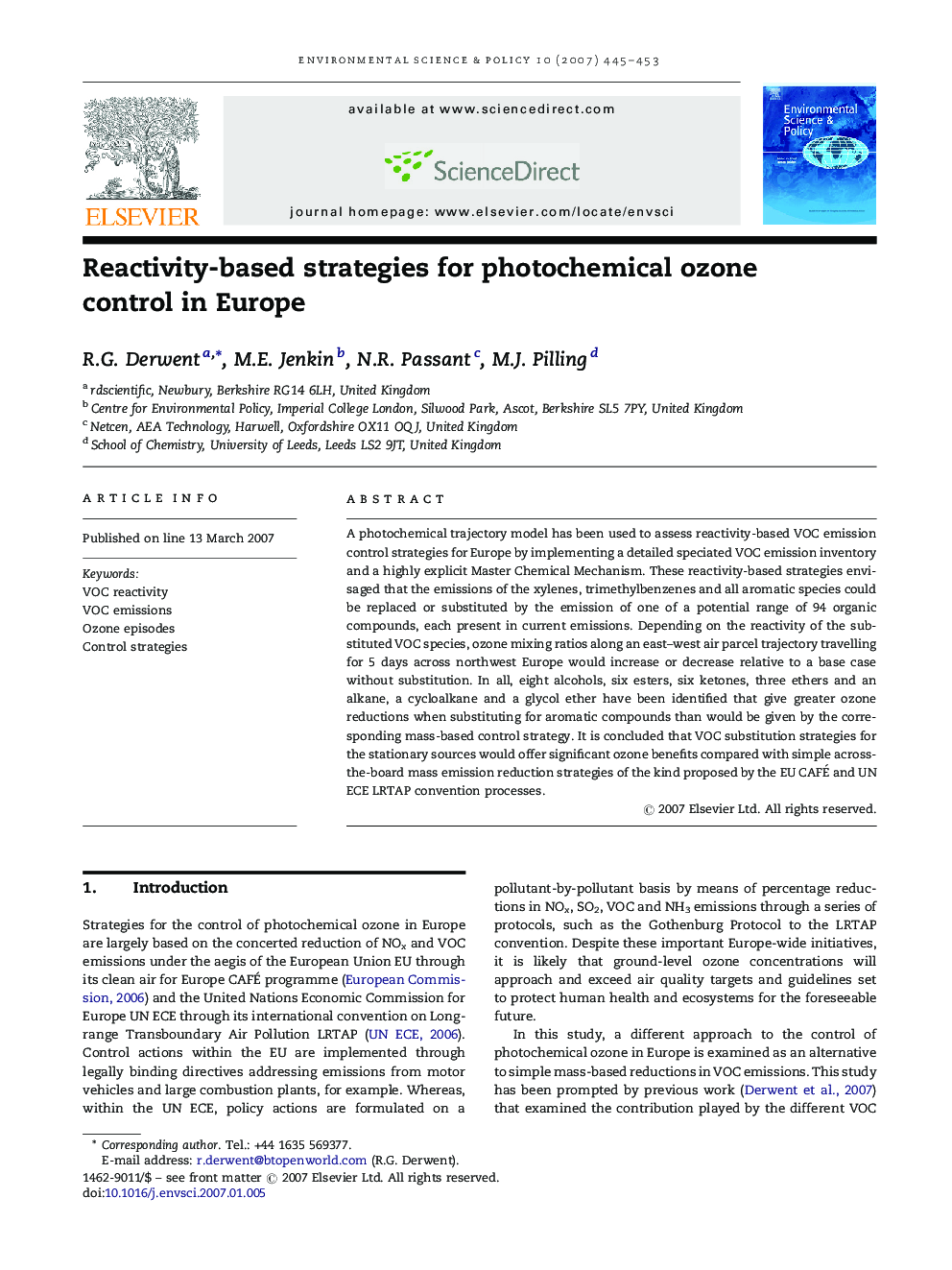| Article ID | Journal | Published Year | Pages | File Type |
|---|---|---|---|---|
| 1054344 | Environmental Science & Policy | 2007 | 9 Pages |
A photochemical trajectory model has been used to assess reactivity-based VOC emission control strategies for Europe by implementing a detailed speciated VOC emission inventory and a highly explicit Master Chemical Mechanism. These reactivity-based strategies envisaged that the emissions of the xylenes, trimethylbenzenes and all aromatic species could be replaced or substituted by the emission of one of a potential range of 94 organic compounds, each present in current emissions. Depending on the reactivity of the substituted VOC species, ozone mixing ratios along an east–west air parcel trajectory travelling for 5 days across northwest Europe would increase or decrease relative to a base case without substitution. In all, eight alcohols, six esters, six ketones, three ethers and an alkane, a cycloalkane and a glycol ether have been identified that give greater ozone reductions when substituting for aromatic compounds than would be given by the corresponding mass-based control strategy. It is concluded that VOC substitution strategies for the stationary sources would offer significant ozone benefits compared with simple across-the-board mass emission reduction strategies of the kind proposed by the EU CAFÉ and UN ECE LRTAP convention processes.
